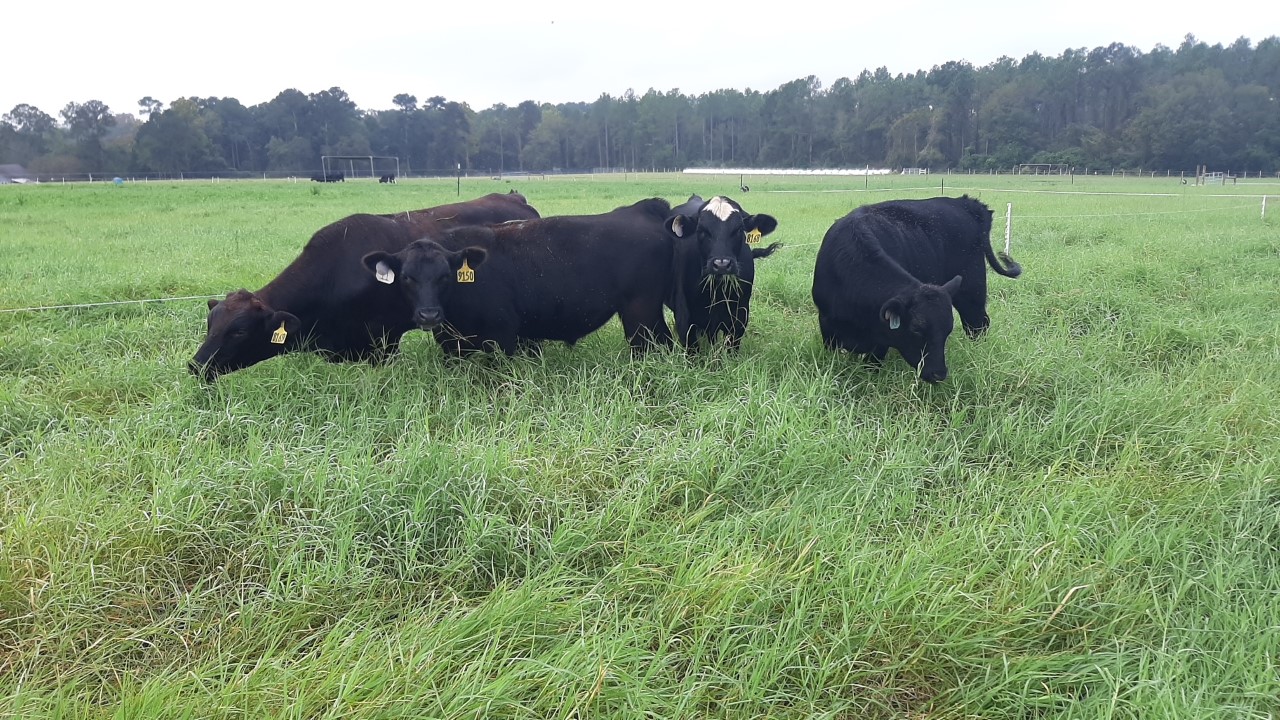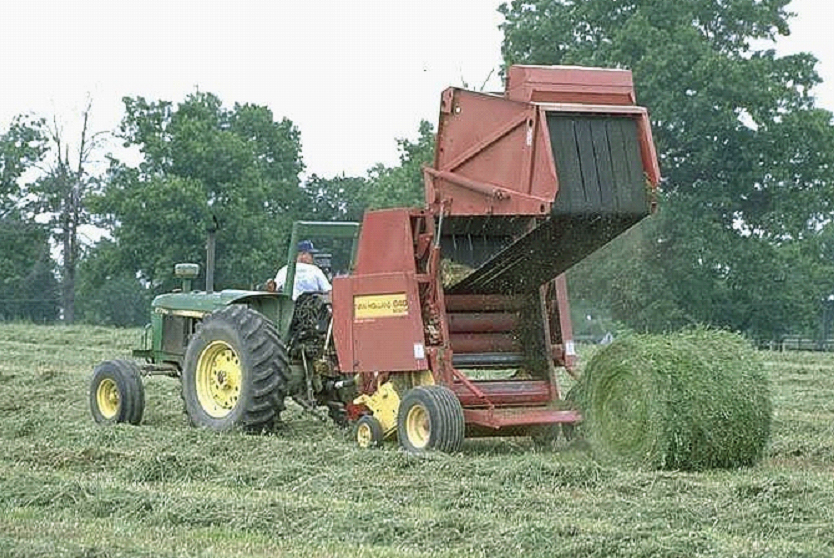
Alfalfa, once a dominant forage in Georgia, is the third-highest crop for economic returns in the United States. Combined with cheap nitrogen prices, difficulty growing the desirable forage crop in Georgia’s challenging climate led to a decline in alfalfa production in the state after its peak in the 1960s.
Now University of Georgia grazing specialist Jennifer Tucker is doing her part to restore alfalfa production to the state for the benefit of both producers and the land.
Tucker, an associate professor in the Department of Animal and Dairy Science in the College of Agricultural and Environmental Sciences, is working with colleagues from Auburn University, University of Florida and the University of Tennessee on grants from the U.S. Department of Agriculture’s National Institute of Food and Agriculture (USDA NIFA) Alfalfa Seed and Alfalfa Forage System Program (ASAFS) to develop best management practices to restore grasslands and sustainably increase alfalfa production in the Southeast.
“There are many positive benefits for increased alfalfa production, but they're all very much linked to improved land and animal performance and sustainability of grazing systems,” said Tucker, who runs the Better Grazing Program on the UGA Tifton campus. “We are looking to improve alfalfa establishment in perennial grasses and the varied uses of alfalfa grass systems either for harvest as baleage or for grazing.”
Growing alfalfa in the Deep South
In Georgia’s humid environment, weed control, as well as disease and insect pressure, caused producers to move away from using alfalfa, but longtime UGA plant breeder Joe Bouton spent years developing alfalfa varieties that grow well in the region, Tucker said. “Currently all of the evaluations in Georgia are using alfalfa varieties developed by Dr. Bouton that were bred specifically for disease and insect resistance, as well as the heat and environment in Georgia, increasing alfalfa’s adaptation and ability to survive tough growing conditions.”
In recent years, Tucker’s program has been awarded multiple USDA-NIFA Alfalfa Forage and Research Program grants focused on increasing the use of alfalfa in the region. The most recent awards will culminate in a five-year project that will measure how much carbon is being sequestered in these alfalfa systems, as well as how it influences nutrient cycling in the soil and in the grazing animals.
“In addition to the animal and stand performance aspects, we will be looking at the nutrient cycling effects that are occurring with these projects,” Tucker said. “We have soil samples from before alfalfa establishment, and we will take more at study conclusion. This will allow us to do more in-depth analysis and illustrate what happens to the soil when you cover the land with a perennial forage mixture, especially one with a deep taproot like alfalfa.”

Alfalfa is used as a feed source for dairy and beef cattle and can reduce the need for costly nutritional supplements when cattle are primarily feed other types of diets, Tucker said.
“Our work is focused on increasing alfalfa utilization in Georgia and across the Southeast to restore grasslands while adding a profit point into pastures or hay fields, land our producers are already investing in, to provide alfalfa as a high-quality feed source,” she added.
Tucker has worked with many producers in Georgia to incorporate alfalfa into Bermuda grass forage systems, but this research will provide more concrete data to guide producers in establishing and managing alfalfa grasslands.
“In our environment we can use alfalfa-Bermuda grass mixtures from late winter through early spring (February or March) then into November, and there aren’t any other forages that really fit into that window like this particular mixture,” she said.
Using alfalfa as a carbon sink
Beginning in late September, Tucker’s team began working on a university-industry collaboration with Forage Genetics International to introduce alfalfa into research fields at the UGA-Tifton Animal and Dairy Science farm that have been used in field crop production for almost two decades to determine how alfalfa production can improve soil health and carbon sequestration.
“We’re taking this land out of annual crop production for livestock feed and putting it into a short-term perennial forage crop for livestock feed — that’s the advantage of the alfalfa crop, you're going to have it for five to seven years in this area with no soil disturbance,” Tucker said.
Her collaborative team includes UGA faculty focusing on forages, weeds, soils and precision agriculture working together to illustrate the carbon change when moving from an annual to a perennial forage crop to allow the ground to rest. The field will undergo grid sampling each year to determine what factors are changing in the soil environment and what recommendations need to be made for the health of the system.
“We know forages are great for carbon sequestration, but now we want to draw that picture more clearly. Especially with the carbon emission discussions that are going on and the carbon credits movement, we don't have any way to actually quantify a lot of this information,” Tucker said. “We see a lot of people who are in animal livestock forage areas, and that's where you're seeing your greatest carbon effects in the ground — because they're not reserving those areas just for crops. They’re utilizing that animal for the benefit of the system. The industry is very interested in seeing the results of this.”
With degrees in both agronomy and animal science, Tucker says she is a crossover scientist “working at the plant and animal interface.”
“I had this main interest in what was happening at the ground level, as well as an underlying interest in how things are working above the ground and the effect it has on the animal,” she said. “With my training and background, I look at the full system to begin with, and we already know that a lot of these things are happening naturally.”

Tucker said she became interested in the carbon-capturing potential of her work in forages after learning about experiments in which men’s cotton underwear (think “tighty-whities”) are buried in various soils under different management systems to see how active the soils are by how degraded the cotton is when it is dug up later. In healthy, active soils, the process happens fairly quickly — some changes can be seen in as little as a week — but most tests last much longer to get a good representation of soil activity.
“Some of these soils have so much activity that all that is left is the elastic waistband,” Tucker said. “Basically this is to show that, if you have really healthy soil that has all the things in it that are doing what they're supposed to and working together, it will degrade the cotton. And if not, then you just have dirty underwear.”
Age-old regenerative agriculture practices
The new focus on carbon capture and the environment is bringing validation to age-old agricultural practices, including the incorporation of livestock into growing systems to improve soil fertility and productivity.
“Livestock systems are contributing to carbon sequestration, probably as much if not more than the concern with greenhouse gas emissions. Much of it is looked at from a negative perspective, but there are things being done within the animal production industry there are offsetting a lot of these concerns that have been advertised as harmful to the environment,” Tucker said.
The Tifton research team's recent addition of animal and dairy science assistant professors Francine Henry and Darren Henry will expand collaborative work on forage and livestock systems from beginning to end with a focus on the different aspects of grazing systems, feeding systems and methane emissions in livestock production from “pasture to plate.”
“Seeing the renewed interest in using animals and plants to regenerate the land and restore soil health makes me grin. I have worked with lots of producers who have been doing this for years,’” Tucker said. “These aren't new ideas. These are things lots of people have been doing, they just haven't called it regenerative agriculture.”
Rotational or management-intensive grazing is a core principle in many of Tucker’s research projects.
“If you had one field and you just put all your cattle in that and left them, depending on the number of animals you had, eventually they will continue to remove plant material and you get down to bare ground, which is creating problems in the soil,” she explained. “If we rotationally graze, we would take that same area of land and split it up into four pieces. You put your cows in this piece for a week, then rotate them into another section every seven days. Now that first section has had 28 days to rest and regrow and you are getting high quality forage for that animal. It is a management tool for forages that benefits the land and the animals.”
While installing permanent fencing to facilitate rotational grazing could be cost-prohibitive, Tucker said there are many tools available to help mitigate costs, such as temporary fencing that is easily moved.
“There is technology out there that makes these practices easier to implement and maybe that's why we're seeing that increase. We have mobile technologies that now make these practices easier to achieve,” she said. “Nothing we do is new; it’s just how we repurpose what we are doing with newer technology.”






